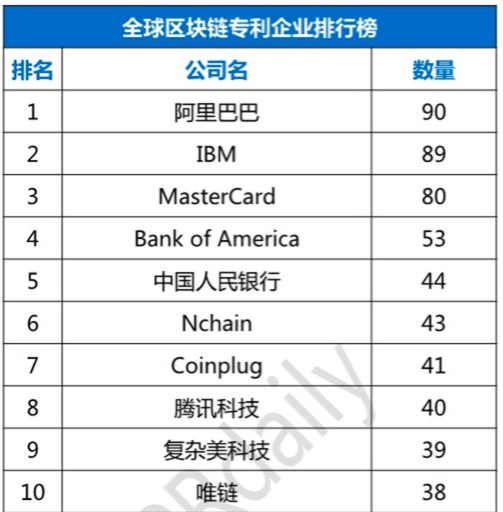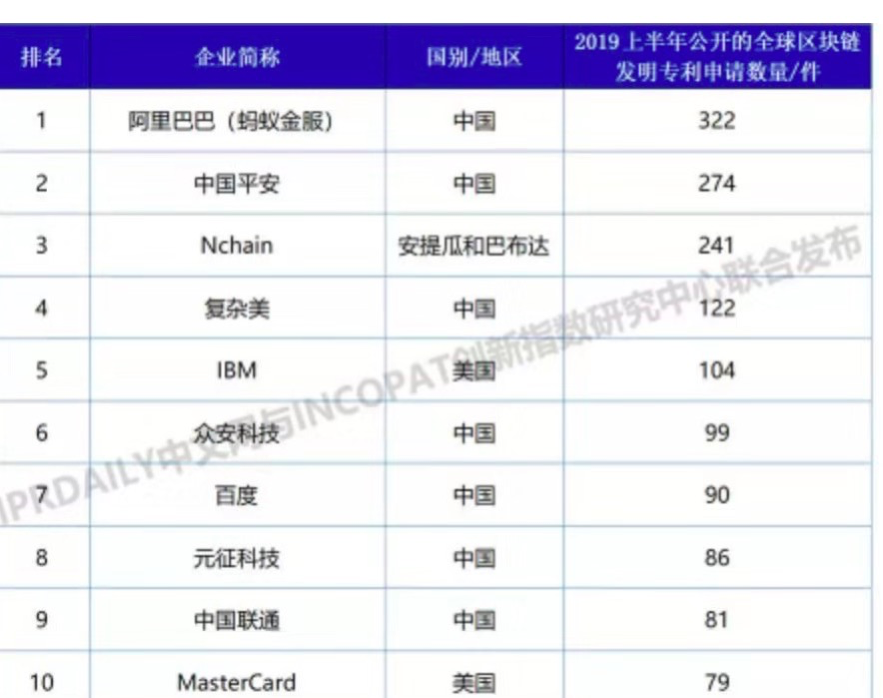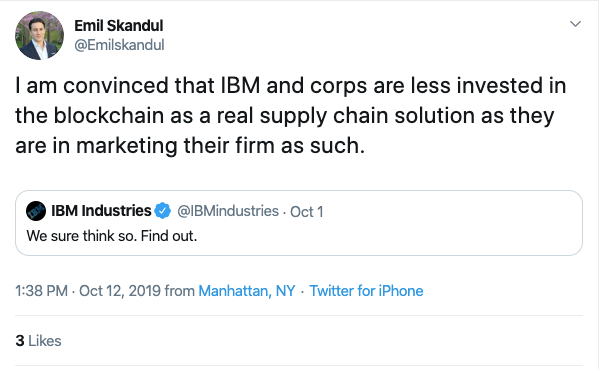Harvesting 30% of the market share, IBM's enterprise-level blockchain strategy is still questioned?
Text / a source / Muggle pie
Centennial IBM is the real hegemon of the computer industry.
In the 1930s, with the sales of card counting machines, IBM accumulated a lot of financial resources, and then sharply grasped the hardware ports of transistor computers, semiconductor integrated circuits, large computers, etc., IBM became a world-class "blue giant."
However, since the 1990s, the "Blue Giant" has been in a state of fatigue. Missing a few transitions has lagged behind the trend of the times. With Microsoft, Apple, Intel, etc., IBM has gradually lost its position as the industry leader.
- Helping to save energy and reduce emissions, Ford uses blockchain technology to track car green mileage
- Peter Tell's layout of bitcoin mining, Layer1 company finalized $50 million in Series A financing
- Grayscale Q3 Report: Investment inflows exceeded $250 million this quarter, a twofold increase from the previous quarter
But IBM has experienced multiple distress, self-help, and hegemony in a hundred years, and now IBM is in a transitional phase. Blockchain technology has also become one of the boosters of this transformation.
From the 2014 blockchain, IBM not only reorganized the supply chain globally, but also rebuilt the industry with blockchain; it also developed a payment system that benchmarked SWIFT. This year, IBM announced in March that it would issue stable currency, and in September it revealed its intention to cooperate with Facebook on digital currency.
How far can the Big Blue go in the blockchain world?

Blue Giant encounters "Bright Guns"
According to Jerry Cuomo, vice president of IBM blockchain technology, IBM's blockchain exploration can be traced back to 2014. When the Ethereum white paper was released, the blockchain began to become more familiar. .
Compared with IBM, the IT giants of the same level are obviously slower. For example, Microsoft launched the "Azure Blockchain as a Service (BaaS)" program at the end of 2015.
All along, in the face of emerging technologies, IBM can always catch the wind. From perforated card data processing equipment to research and development computers, and later to "ignite the raging fire in the PC market," IBM's sensitivity to emerging technologies has been strong.
In the 1950s, IBM's founder's eldest son, Thomas J. Watson Jr (hereafter referred to as Little Watson), succeeded his father, led IBM to transform, from traditional business to full computer research and development. In particular, it provides services to government agencies and the US military. This shift has led IBM to achieve more than $2 billion in annual revenue.
In the 1960s, the new company leader, V. Learson, under the guidance of Little Watson, seized the opportunity of integrated circuits to develop the epoch-making IBM "System/360" large-scale computer to make computers more commercial. Chemical.
In the 1980s, IBM's fifth leader, John R. Opel, led IBM to develop the world's first personal computer (hereafter referred to as PC), which led to the official birth of the PC market concept.
In the 1990s, IBM's eighth leader, L. Gerstner, first proposed "network-centric computing," and led IBM to develop a supercomputer "dark blue." Since then, IBM, which is based on the dark blue background, has officially been called the "Blue Giant."
But along the way, IBM, which seems to be able to accurately grasp the vents every time, has also encountered "the dark moment."
In the late 1980s, IBM followed the market opening policy to open up some computer R&D technologies, which led to many counterfeiters. But at the time, IBM’s sixth leader, John J. Akers, adopted a new structure in the newly introduced computer in order to prevent the latecomers from continuing to “cool down”, which is not compatible with previous versions of the computer. Leading to the dissatisfaction of the original IBM users;
At the same time, the nine compatible machine manufacturers led by Compaq announced that they will adopt new standards compatible with previous computers, which has greatly affected the IBM market.
In addition, with the gradual popularization of personal computers in the early 1990s, the demand for large computers has dropped sharply, and there has been a large backlog of products and no one cares. IBM's market has begun to shrink. According to Muggle’s query data, the most direct consequence of this phenomenon was that IBM lost more than $16 billion in 1991-1993.
Source: Annex Research 
The representatives of these "tiger wolves" are Apple and Microsoft. Apple is a "bright gun" and Microsoft is a "dark arrow."
Apple, which started the PC business from the beginning, is naturally the number one enemy of IBM. But Microsoft is a bit different. At first, in order to solve the PC operating system business, IBM found Microsoft cooperation, and the solution given by Microsoft at the beginning was satisfactory.

In the 1990s, the software market was not able to seize the market, but Microsoft took the lead. In the new century, it lost to Amazon in the cloud service. Now, the old enterprise IBM, how to open a new era and return to the peak?
Crazy into the blockchain
IBM's investment in the blockchain is obvious to all.
In 2018, according to Marie Wieck, general manager of the IBM blockchain business, IBM has recruited about 1,600 employees to explore blockchain technology. 36Kr's previous article analysis, based on an average annual salary of $100,000 per person, is conservatively estimated. In terms of manpower alone, IBM spends $160 million annually on blockchain projects.
Even so, IBM continues to attract blockchain talent. In March 2019, according to a survey report released by the American workplace community Glassdoor, among the top ten companies in the blockchain, IBM has nearly 110 jobs, more than 50 more than the second-ranked Ernst & Young. . This also indirectly indicates the ambition of IBM to bet on the blockchain.
Not only is talent recruitment, IBM's annual investment in blockchain patents is also huge. According to public data, in 2018 and 2019 H1, IBM applied for 89 and 104 patents respectively, and both ranked among the top five global blockchain patent companies.


Three blockchain blocks
Cross-border payment and stable currency
Enterprise-level blockchain faces controversy

IBM's blockchain is a specific project that wastes time. They suddenly come out and say, "Hey, we have all the IP, this is our platform, you can join in. Like (IBM)… Not at all the core of the blockchain.
However, V God recognized IBM's food supply chain project to achieve traceable certification of food, which is helpful to consumers.
But Alex Isaiev, founder of blockchain retail project OSA DC, bluntly said, “The blockchain application of large companies like IBM and Wal-Mart is more like a hype. They say too much and do limited. These big companies are private. The data on the chain is neither open nor transparent, and it is difficult for consumers to benefit from it. "
Perhaps, IBM needs to solve the "faults" left over from the previous era, and at the same time achieve greater open source, in order to gain more professional recognition.
Second, it has been pointed out in the industry that the Hyperledger Fabric project that IBM contributed to the superbook is not a true blockchain, and IBM is also accused of leading the superbook.
In July of this year, Stuart Popejoy, who had 15 years of experience in building a trading system in the financial industry and was responsible for the JPMorgan blockchain project Juno, said that on the one hand, IBM's "blockchain" "Technology is flawed in many ways, including security, performance, and reliability. The Hyperledger Fabric is also less resistant to tampering and attacks. On the other hand, Hyperledger Fabric has no consensus mechanism, but "no it, IBM's." The blockchain 'is nothing more than a time-stamped list."
A blockchain without a consensus mechanism is like a country without order. Can a blockchain project that loses its consensus mechanism be called a blockchain project?
In addition, according to CoinDesk's previous article, among the 11 members of the new member of the Hyperledger Technical Steering Committee (which focuses on technical issues and is responsible for approving projects and reviewing updates, hereinafter referred to as TSC), announced in September this year. There are six from IBM. Only two of the TSC members were from IBM.
Todd Little, Oracle's blockchain platform architect, wrote in the TSC email: "Obviously, IBM is now controlling TSC. Is this the direction that superbooks want?"
Brian Behlendorf, executive director of the super-book, said in response to the query that IBM was not questioned for the first time because IBM’s contribution to technology exceeded any other company associated with the alliance. Have excessive control over the superbook.
The project was questioned by the property, and the association was accused of having too much discourse power. IBM must solve these problems in order to continue the alliance chain business. Finally, it was pointed out that IBM bundled the business model with open source.
In November 2018, the academician of the Norwegian Academy of Sciences, Rong Yiming, said that in fact, IBM bundled the business model through open source. At the bottom of the superbook is open source, but IBM will provide customers with a packaged service at the upper level, including platform services, solutions, and ecosystems.
Although providing a one-click service for enterprises can save a lot of trouble, it also weakens the autonomy of enterprise development. How to help the B-end users to operate conveniently while helping them to create a personalized interface is an issue IBM needs to think about.
In the face of today's fast-changing, complex and diverse blockchain industry, what kind of game will IBM play next? The Muggle will also continue to pay attention.

Original article, unauthorized reproduction is prohibited.
We will continue to update Blocking; if you have any questions or suggestions, please contact us!
Was this article helpful?
93 out of 132 found this helpful
Related articles
- Bloomberg: Libra should probably play another way
- Vitalik Buterin: Ethereum underestimates the importance of the community, we are not doing enough in communication
- How terrible is the IEO? 62% of 87 projects broke, with a maximum loss of 99%
- The “blockchain scam”, which has been repeatedly subject to regulatory investigations, has been officially opened.
- Can incentive model adjustment improve EOS online voting? BM release new ideas for governance
- Is the blockchain anonymity compatible with the real business world?
- Jiang Zhuoer: Will it come if the halving of the bull market will come?





